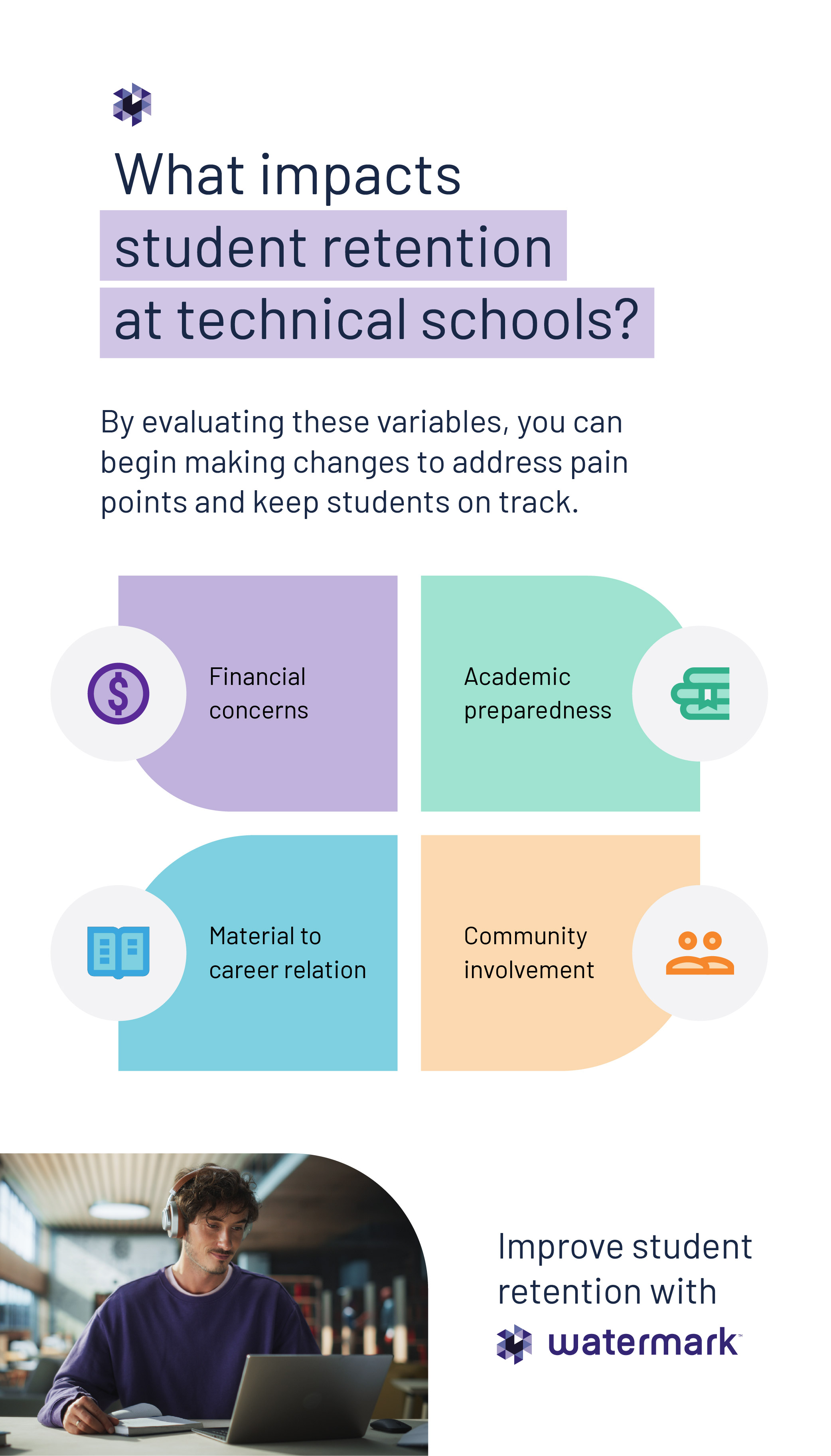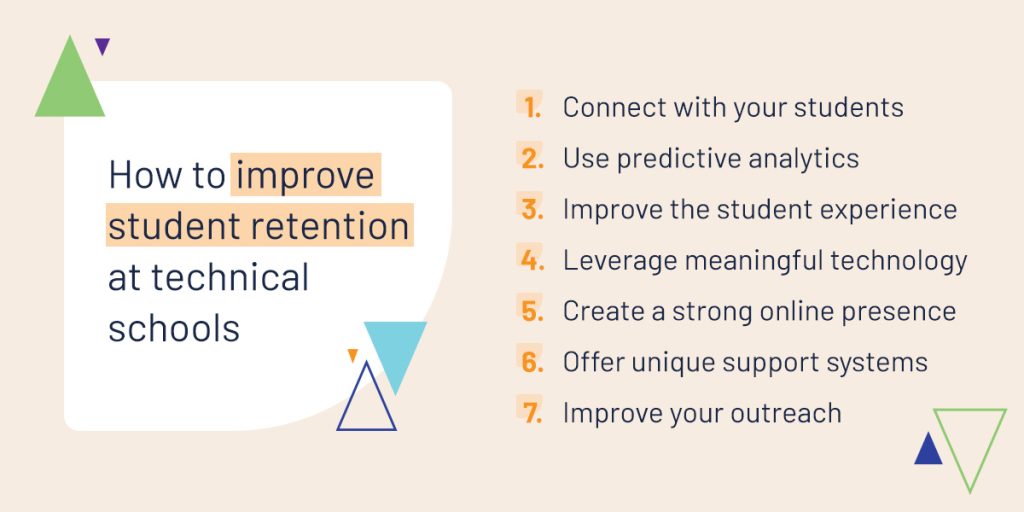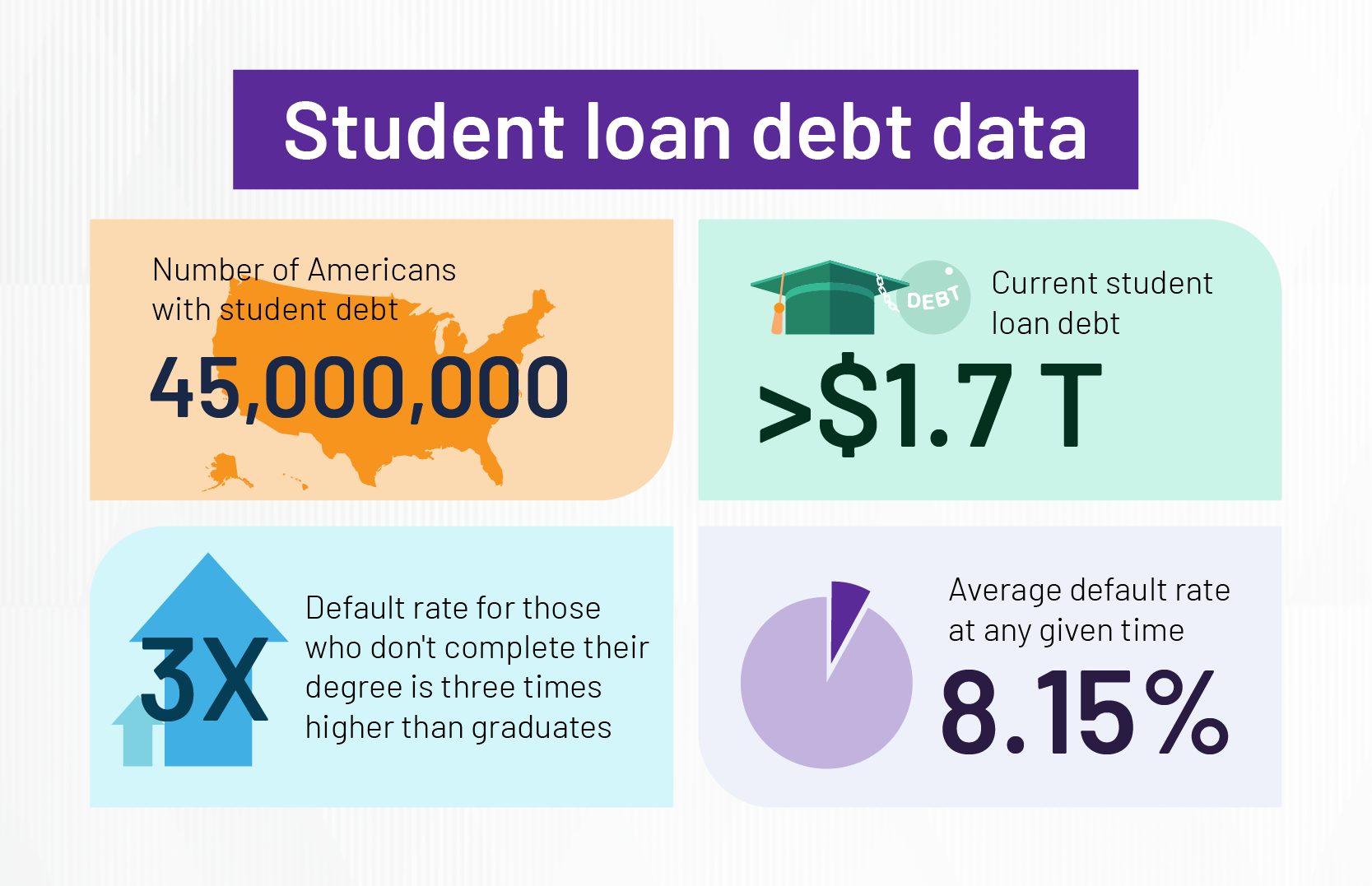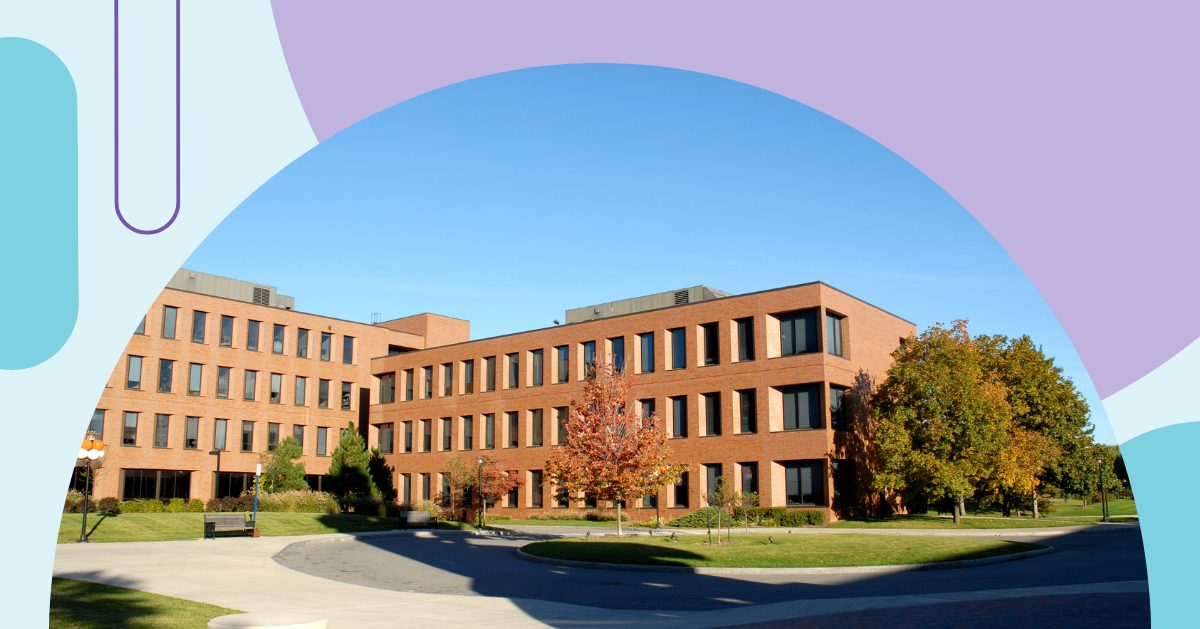
Student retention indicates your institution’s ability to lead students to graduation. Low retention rates adversely affect higher education institutions and hinder student progress. Understanding the importance of retention and the factors that influence it can help you determine the correct actions to address concerns. Review our guide to improving student retention to discover ways to connect with your students and encourage them to complete their programs.
What is student retention?
Student retention is a measurement for higher education that depicts how many students enroll at an institution and successfully finish their programs or degrees. A high retention rate means many enrolled students graduate from your institution, while a low retention rate indicates only some students complete their programs. Student retention is not the same as grade retention, though your institution can implement practices to ease this transition and guide students to graduation. These rates help determine an institution’s success and how well it is performing for its students.
Difference between student retention and persistence
Student retention is a measurement that colleges, universities, and technical schools can use to determine institutional success, while persistence is an individual student measurement. Persistence quantifies a student’s determination to finish their program or degree. This measurement still affects retention because persistent students are more likely to stay the course.
Administrators use multiple factors when they measure student persistence. For instance, administrators may evaluate whether the student has transferred schools, participated in many activities, or thrived academically. Additionally, some schools create personalized education paths to ensure students stay on track to graduate.
Why is student retention important?
Student retention is essential because it highlights student success and an institution’s ability to encourage students to graduate. High retention rates reflect your commitment to your students and their progress. Students comparing multiple schools can use retention rates to determine whether your institution will be a good fit for them and their goals.
Additionally, low retention creates a financial loss for institutions. Administrators and other decision-makers can use these rates to identify strengths and weaknesses in curricula, programs, resources, and campus life to prevent this loss. They can use findings to set new goals, start initiatives, and open conversations about what their institution can do to drive meaningful change and keep students engaged.
How to measure student retention
Many institutions measure retention by evaluating the percentage of students who complete their programs within a specific time frame. However, there are other ways to track student progress and determine retention rates.
You can measure retention by subtracting the number of students who have dropped out or transferred from your total number of enrolled students. Then, divide this number by the total enrolled students. For example, let’s say you had 5,000 students at the beginning of the term and 400 canceled enrollment. Subtract the 400 from your starting 5,000, then divide 4,600 by 5,000. This number would indicate your institution has a 92% retention rate.
Technical and trade school graduation rates
It is beneficial to understand the technical and trade school landscape before crafting solutions for your institution. While various factors, including institution location, funding, available programs, student support, and similar elements, will ultimately impact trade and technical school graduation rates, there are several commonalities. Here’s what you should know about graduation and retention:
- In 2022, conferred rates of associate’s degrees fell from 59 percent down to 50 percent compared to 2012.
- Business and marketing certificates make up the smallest percentage of conferred certificates.
- Nearly one-third of those enrolled in postsecondary education by 2021 had not received a degree or certificate.
What impacts student retention at technical schools?
Many elements affect student retention and whether students continue to the following term and toward graduation. By evaluating these variables, you can begin making changes to address pain points and keep students on track.

Financial concerns
Money is a significant factor for students to continue the following term. On top of tuition, students must pay for institutional fees, textbooks, classroom materials, and campus commutes. Furthermore, many students may already be spending their resources on housing, child care, health care, car payments, and more.
On average, obtaining a trade school degree costs around $33,000, and most graduates complete programs with around $10,000 in debt. While this number is significantly lower than obtaining a bachelor’s degree, some students may find it challenging to justify the cost of education if they doubt their ability to pay back loans or afford classes out of pocket.
Academic preparedness
Students who lack critical thinking, analysis, or logic skills can struggle with higher education. Students enrolled in technical schools may have trouble adjusting to the rigorous course load and be unable to master the necessary skills in the timeframe provided. Without resources to provide additional support, students may opt to transfer schools or stop their education entirely.
Material to career relation
A significant advantage of choosing a technical or trade school is seeking a career in a high-demand field. For example, careers in mechanics, electric, and medical fields often offer job security, as people consistently require services from professionals in these fields.
While this element can be a draw for many trade school students, your institution must fulfill the promise to deliver meaningful learning experiences. Do you utilize recent technologies? Do your instructors discuss best industry practices? Does course material relate to the current landscape? If your students feel that you lack in these areas or are not getting adequate experience in their field, they may seek another institution or forgo education altogether.
Community involvement
Community involvement positively impacts student retention and performance. Students who seek extracurricular activities and involvement are more likely to feel satisfied with their academic experience and recognize the value of completing their education. However, many trade schools lack the robust selection of community experiences that traditional two-year or four-year institutions offer. While trade schools offer valuable work-related skills and experience, many students miss out on the social aspects of higher education.
How to improve student retention at technical schools

Using student retention best practices will improve your institution’s ability to keep students engaged and prompt them to complete their education. Providing students with the support they need to finish their programs will encourage them to flourish.
Consider these ways to improve student retention at technical schools:
1. Connect with your students
The first year of higher education is the most critical. Many students form beliefs about higher education during this time and must overcome challenges they’ve never experienced. Connecting with students early can help ensure they have the support they need to continue progressing.
2. Use predictive analytics
You can use predictive analytics to improve student retention by tracking student progress and determining what is likely to happen in the future. You can use your findings to devise action plans for students who are falling off track and prevent them from leaving your institution.
3. Improve the student experience
You can use student surveys to discover what changes students would like to see. Following student advice and listening to their concerns can lead you to create a more stimulating environment where they can thrive. Often, gathering this feedback can help you track trends and highlight where common pain points are recurring.
4. Leverage meaningful technology
Your institution can use a growing number of digital resources to improve retention. Use software to improve student outcomes by turning data into actionable insights, identifying at-risk students, and guiding intervention strategies with validated research. Leverage this technology to boost student communication and foster a more collaborative environment.
5. Create a strong online presence
Creating a strong online presence is essential in our digital age. From classic websites to social media pages, an online presence can deliver many benefits to you and your students. Improving your online presence can make it easier for students to discover niche fields, boost your outreach initiatives, and encourage collaboration among existing and prospective students. You can also use your website to post information about scholarship opportunities, campus resources, course offerings, and more to highlight all that you offer and ensure students make the most of their time at your institution.
6. Offer unique support systems
Regardless of the exact path a student chooses, support is vital to their journey. Support systems and services like tutoring centers, counseling, financial aid, and career services can help students improve their personal and academic situation. These systems can make education more accessible for a broader pool of students and highlight your commitment to student success and well-being.
7. Improve your outreach
Despite the immense value trade schools can bring to learners, there is a general stigma surrounding these institutions. Many parents steer high school students away from technical schools, and high schools often encourage students to attend traditional colleges. Improving your outreach and advocating for the value of your institution can make more students aware of this educational option and boost enrollment and retention. Consider participating in local college fairs or partnering with local school districts to advocate for your institution and trade careers.
Improve student retention with Watermark
Watermark has been delivering innovative higher education student success solutions for over two decades. We know how to use data to increase student retention, and we’ve done it many times before. Institutions that partner with us see increased retention in as little as one year.
Watermark Student Success & Engagement is a higher education solution that increases retention. Our software uses intuitive reporting to make predictive analyses about your students. Watermark’s tools let you track attendance and receive alerts when students fall behind. You can collaborate with students to construct personalized pathways to success while keeping them engaged and supporting their needs.
Request a demo of Student Success & Engagement to begin increasing student retention.
















































































































































































































































































































































































































